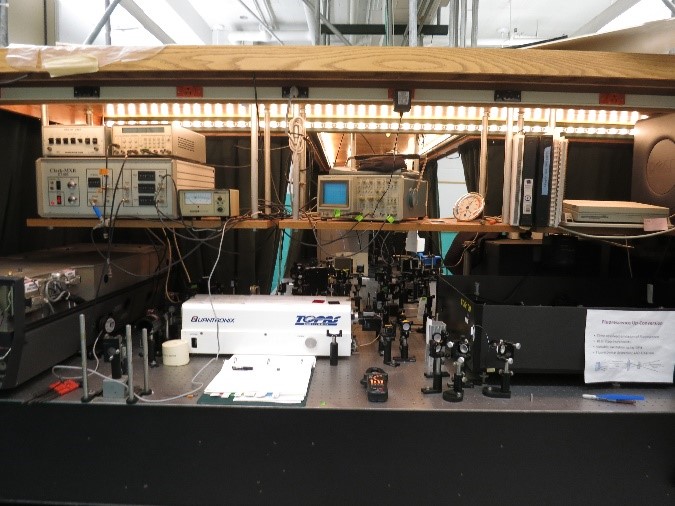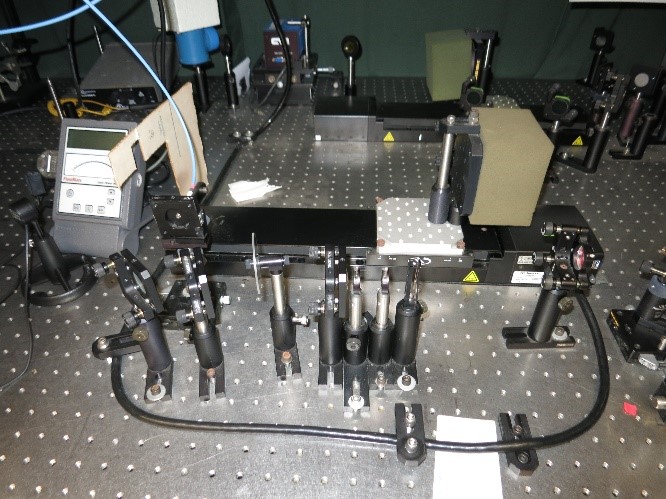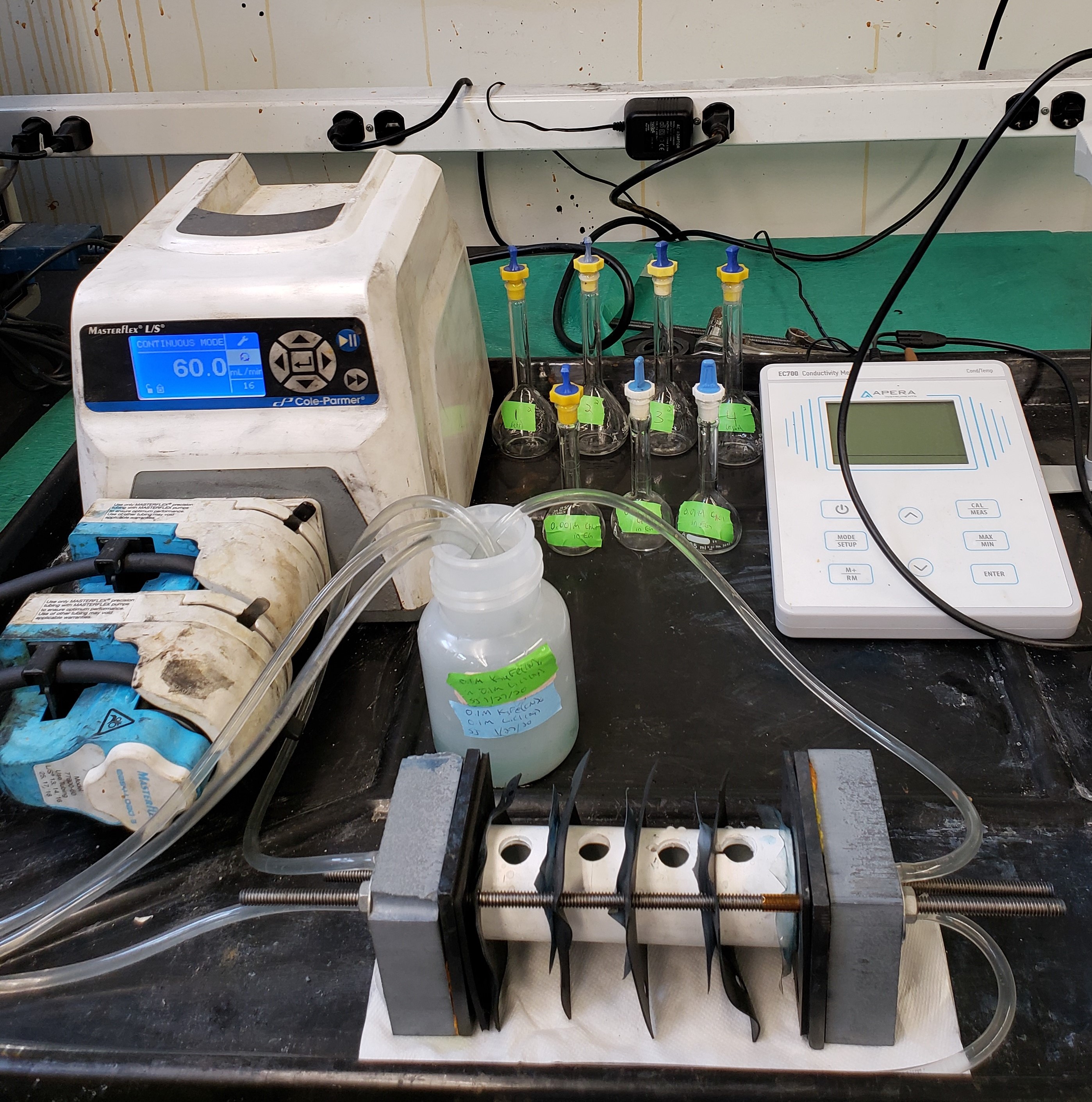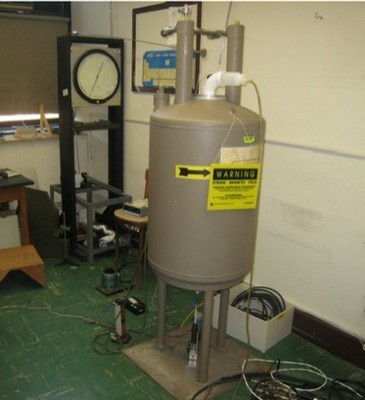Center for Chemical Dynamics and Nanomaterials Research


Director: Dr. Clemens Burda
Deep Eutectic Solvent Transference Number Test Apparatus

Researcher: Sara Jorgenson
Deep Eutectic Solvent Electrochemical Impedance Spectroscopy

Researcher: William Dean
Magnet and high pressure NMR accessory for Chemagnetics 300 MHz system

Researchers: Dr. Steven Greenbaum, Sahana Das Bhattacharyya
-
A Stelar Spinmaster 1T fast Field Cycling Nuclear Magnetic Resonance Relaxometer
-
Broadband relaxation data in local fields ranging from ~0.002 – 1 T for investigation of molecular diffusive and rotational motions, and the possible coupling between them.
-
-
A High pressure NMR probe
-
Hydrostatic pressure as a thermodynamic variable allows the computation of molecular activation volumes. Range: atmospheric to 250 MPa
-
-
300MHz Varian NMR Spectrometer
-
Steller Fast Field Cyclometry NMR Spectrometer
-
400 MHz Bruker NMR Spectrometer
Other Shared Institutional Facilities:
Case Western Reserve University
Electrochemical Engineering and Energy Lab (EEEL)
Swagelok Center for Surface Analysis of Materials (SCSAM)
Case Applied Raman Spectroscopy Lab
Engineering Services Fabrication Center
Materials for Optoelectronic Research and Education (MORE Center)
University of Tennessee, Knoxville
Advanced Microscopy and Imaging Center
Synthetic Facilities
Texas A&M University
Materials Characterization Facility
Soft Matter Facility
Microscopy and Imaging Center
Notre Dame University
Notre Dame Center for Research Computing
Computational Science and Engineering Lab (CoMSEL)
Brookhaven National Lab
National Synchrotron Light Source II (NSLS II)
Center for Functional Nanomaterials (CFN)
Columbia University
Columbia Physics Dept. Machine Shop
Materials Research Science and Engineering Center (MRSEC)
Nanoscale Science Engineering Center (NSEC)
NMR Facility
X-Ray Diffraction and Scanning and Transmission Electron Microscopy
Hunter College
High Field Solid State NMR Spectrometers
